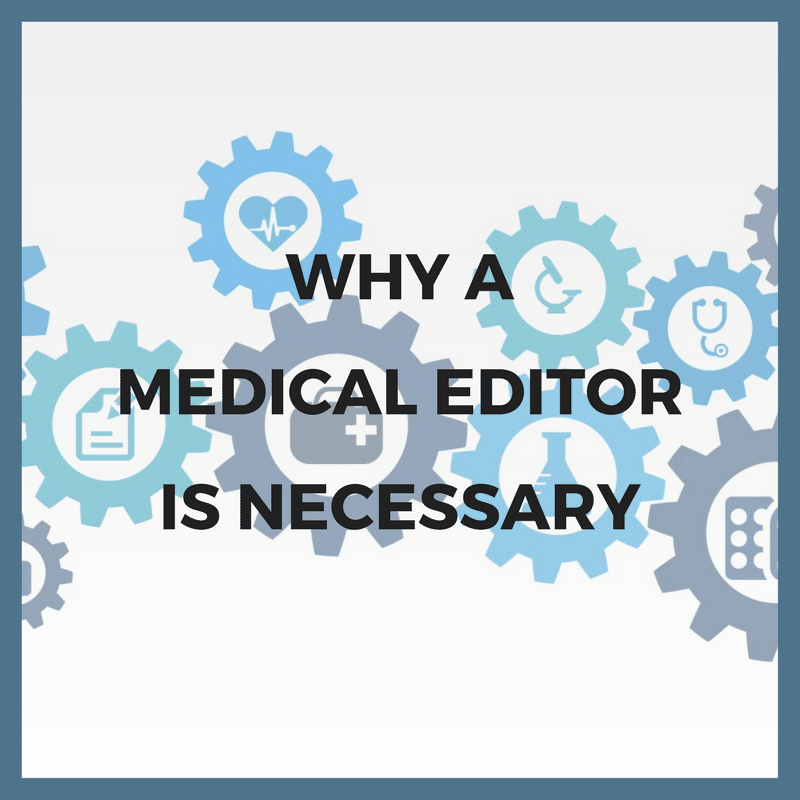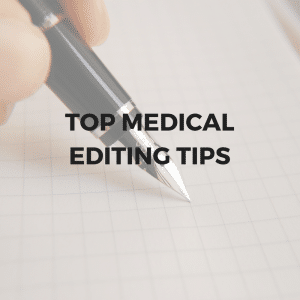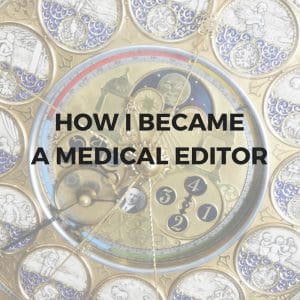My medical editing experience has been with medical communications companies and healthcare advertising agencies. The former tend to value editing because they are working on scientific publications, abstracts, posters, presentations, monographs, which need to distil a vast amount of clinical data into communicable information, requiring someone else apart from the writer to check it. Healthcare advertising agencies tend to work with smaller pieces, such as leavepieces, detail aids (although these can become quite large), journal advertisements, website banners and websites, which has led to a belief that the writers and account managers should be able to check for errors without a specific person dedicated to that purpose. Obviously, I disagree with this hypothesis, and these are my reasons why.
1. The ability to spot errors.
This is a basic aspect of the copy editor/proofreader, but it is a vital one because it is not something that can always be taught. I might be overgeneralising, but I think that the mindsets of writers and editors differ in the way they approach the words, and writers don’t see the errors in the same way as an editor.
This is not to denigrate writers – I admire people who can sift through dull clinical data and bring forth clean prose and a clear message (I should know – I have written a PhD thesis). It’s just that looking for errors, even when checking someone else’s work, is not the primary thought process of the writer – a writer will tend to rewrite instead of polish.
A copy editor/proofreader can help with the writing, but the primary aim is to ensure that there are no errors, be it in spelling, grammar, punctuation, tone, abbreviation use, reference order, figure numbering or any of the other details that are overlooked.
2. A grasp of the grammar and mechanics of the English language
Writers have an instinct for putting words together in a way that sounds right to them, and others, but not all of them have the knowledge to understand all the aspects of good syntax. Even though the job of the copy editor is not just ‘grammar and typos’ (a phrase I have heard many times when asked to look at a piece of material), an understanding of how English works and where to spot when it isn’t will allow for a better check of the material. The absence of hyphens and commas, subject-verb disagreement, incorrect spelling of homonyms (the common ones in medical materials are practice/practise and licence/license), dangling participles, etc. – these small details matter and there have been many times when I’ve explained the amends I’ve made to blank stares. Ideally, a writer should know all these things but we don’t live in an ideal world, which is lucky because medical editors might not be needed.
3. An understanding of the science
Another generalisation coming up: not all writers and account managers who work in the healthcare field have a scientific background. This is understandable because there simply aren’t enough scientifically trained people who have decided to give up science for another career, and the attributes necessary for writing and project managing aren’t completely compatible with someone who wanted to study science.
People without the biological knowledge do a great job, because they are smart and pick up the therapy area quickly and that’s why they are still employed. However, an ability to understand the biological basics at the same time as ensuring error-free content saves time and effort in creating materials that the intended audience (generally, healthcare professionals and specialists) will not dismiss due to problems with the medical aspect.
Medical editing is specialised, and familiarity with the basics of biology (or in my case, biochemistry) and reading a small library of scientific papers (which I had to do for my PhD) mean that the medical editor will be able to spot biological inaccuracies as well as the grammatical and spelling ones. This helps the writer when discussing the concepts, and it helps the account managers when they have to incorporate changes from clients and their medical reviewers.
4. Familiarity with regulations
In the UK, healthcare advertising for prescription-only medicines adheres to regulations set in the Association of the British Pharmaceutical Industry’s (ABPI) Code Of Practice, administered by the Prescription Medicines Code of Practice Authority (PMCPA).
It is not a huge document, but it does cover all aspects of the interaction of the pharmaceutical companies with their customers, namely the healthcare professionals who will prescribe the drugs to patients. Not all of it is applicable to promotional materials created by healthcare advertising agencies, but familiarity with those sections of the Code of Practice is vital to the implementation of those materials. For example, Clause 7.9 is a ruling on using the word ‘safe’ (and ‘safety’) in promotional materials – in essence, because no drug is completely safe, it cannot be stated that a drug is safe or has proven safety. I’ve lost track of the number of times I’ve had to tell writers and account managers that they can’t use the word ‘safe’ in materials.
There are added complications when dealing with materials that will be used in other EU countries (e.g. some countries prohibit meeting abstracts to be used as references, and Italy forbids adaptation of graphs from scientific articles in materials, allowing only direct copies), so awareness of these is vital to the work being produced, and something that is natural for an editor to highlight.
I understand that these points are essentially a list for why a healthcare advertising agency should hire my services, but it’s also an explanation of why a medical editor has value in general for such a specialised field.



